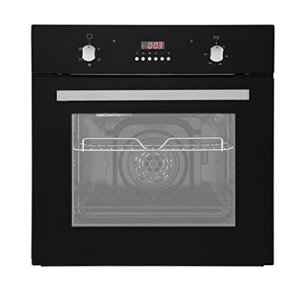7 Little Changes That Will Make A Big Difference With Your Integrated Ovens And Hobs

The Future of Culinary Convenience: Integrated Ovens and Hobs
In the ever-evolving world of cooking area style, integrated ovens and hobs are at the forefront of modern-day culinary development. These devices not only promise aesthetic appeal however likewise improve performance and performance, transforming how we prepare our meals. As property owners progressively look for to create smooth, elegant, and easy to use cooking areas, the combination of ovens and hobs provides an ideal service. This post explores what integrated ovens and hobs are, their benefits, and key considerations for those looking to upgrade their kitchen.
What Are Integrated Ovens and Hobs?
Integrated ovens and hobs are kitchen area home appliances seamlessly built into the cabinets or counters, rather than standing apart as different entities. Integrated ovens are created to mix into kitchen area systems, offering a flush finish with surrounding cabinetry. Likewise, integrated hobs are installed directly into the counter top, producing a streamlined appearance. This minimalist design approach not just elevates the aesthetic appeal of the cooking area however likewise takes full advantage of readily available space.
Types of Integrated Ovens
Single Ovens: These standalone units are developed for simplicity and ease of use, featuring a single cooking chamber and several cooking modes such as baking, grilling, and roasting.
Double Ovens: Ideal for bigger households or avid cooks, double ovens provide two independent cooking compartments, permitting multiple dishes to be ready concurrently at various temperatures.
Combination Ovens: Blending traditional baking and steam cooking, mix ovens use versatility for various cooking needs, keeping moisture while guaranteeing completely cooked meals.
Types of Integrated Hobs
Gas Hobs: These hobs enable for accurate temperature level control and immediate heat, making them a preferred among expert chefs and cooking enthusiasts.
Induction Hobs: Known for their effectiveness and security, induction hobs utilize electromagnetic energy to heat pots and pans directly. They are quick to heat and cool down quickly, lowering the danger of burns.
Electric Hobs: Featuring smooth ceramic or glass surface areas, electric hobs are simple to clean and provide an even heat circulation for a variety of cooking styles.
Advantages of Integrated Ovens and Hobs
1. Area Optimization
With the trend of smaller living spaces and open-concept homes, integrated devices assist optimize kitchen area. By fitting seamlessly into cabinets, cooking areas can appear bigger and more open, decreasing clutter and enhancing visual appeal.
2. Visual Appeal
Integrated ovens and hobs supply a streamlined, modern-day look that fits well within numerous style styles. The capability to personalize cabinetry ensures that property owners can achieve a cohesive look that matches their design, whether contemporary, conventional, or something in between.
3. Enhanced Functionality
Integrated home appliances often come with sophisticated features such as clever technology, self-cleaning options, and different cooking modes. These enhancements not just simplify the cooking procedure but also enhance use, making preparing an enjoyable experience.
4. Security Features
Integrated hobs, specifically induction models, are thought about much safer than traditional cooking surface areas. They cool off rapidly, minimizing the risk of burns, and frequently include features like kid locks and automated shut-off for additional safety.
Key Considerations When Choosing Integrated Ovens and Hobs
1. Area and Layout
Before buying integrated home appliances, think about the space readily available in your cooking area. Procedure the cabinetry and countertops carefully to make sure a best fit, enabling for adequate ventilation and installation space.
2. Cooking Needs
Evaluate your cooking practices and choices. If you frequently amuse or prepare large meals, a double oven may be the best option. On the other hand, if you're a periodic chef, a single oven may be adequate. Likewise, picking in between gas, electric, or induction hobs will depend on your cooking design and comfort level.
3. Energy Efficiency
With rising energy expenses and growing ecological concerns, choosing energy-efficient home appliances can save cash in the long run. Try to find items with high energy ratings and functions like programmable timers and eco-modes.
4. built in electric oven and Brand
Purchasing premium devices from trustworthy brands guarantees durability and performance. Reading client reviews and looking for recommendations can help limit the finest choices tailored to your needs.

Conclusion
Integrated ovens and hobs are more than just kitchen area appliances; they represent a shift towards a more functional, elegant, and efficient method to cooking. As property owners focus on smooth design, convenience, and advanced functions, these integrated options will certainly shape the kitchens of tomorrow. Whether refurbishing a kitchen area or designing a brand-new one from scratch, incorporating ovens and hobs is an investment that guarantees to boost both culinary experiences and the total aesthetic of the home.
